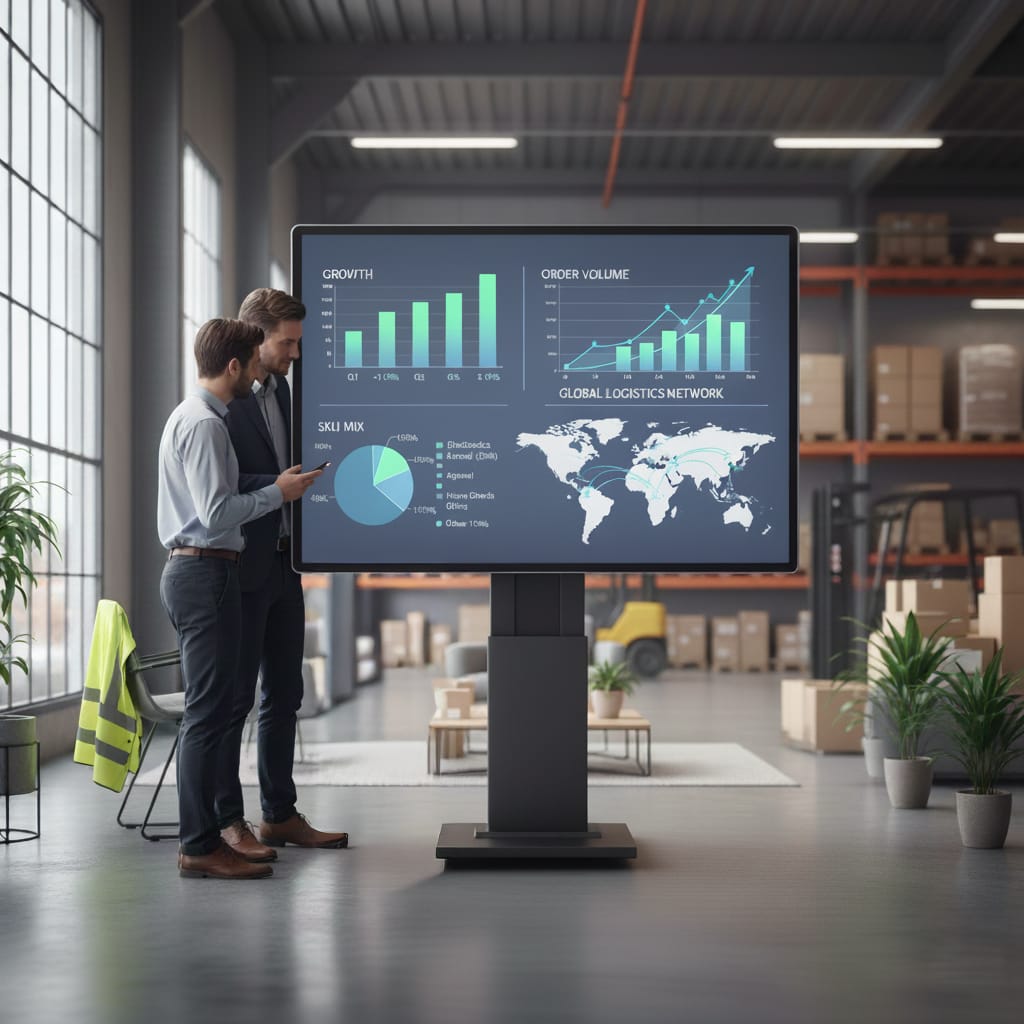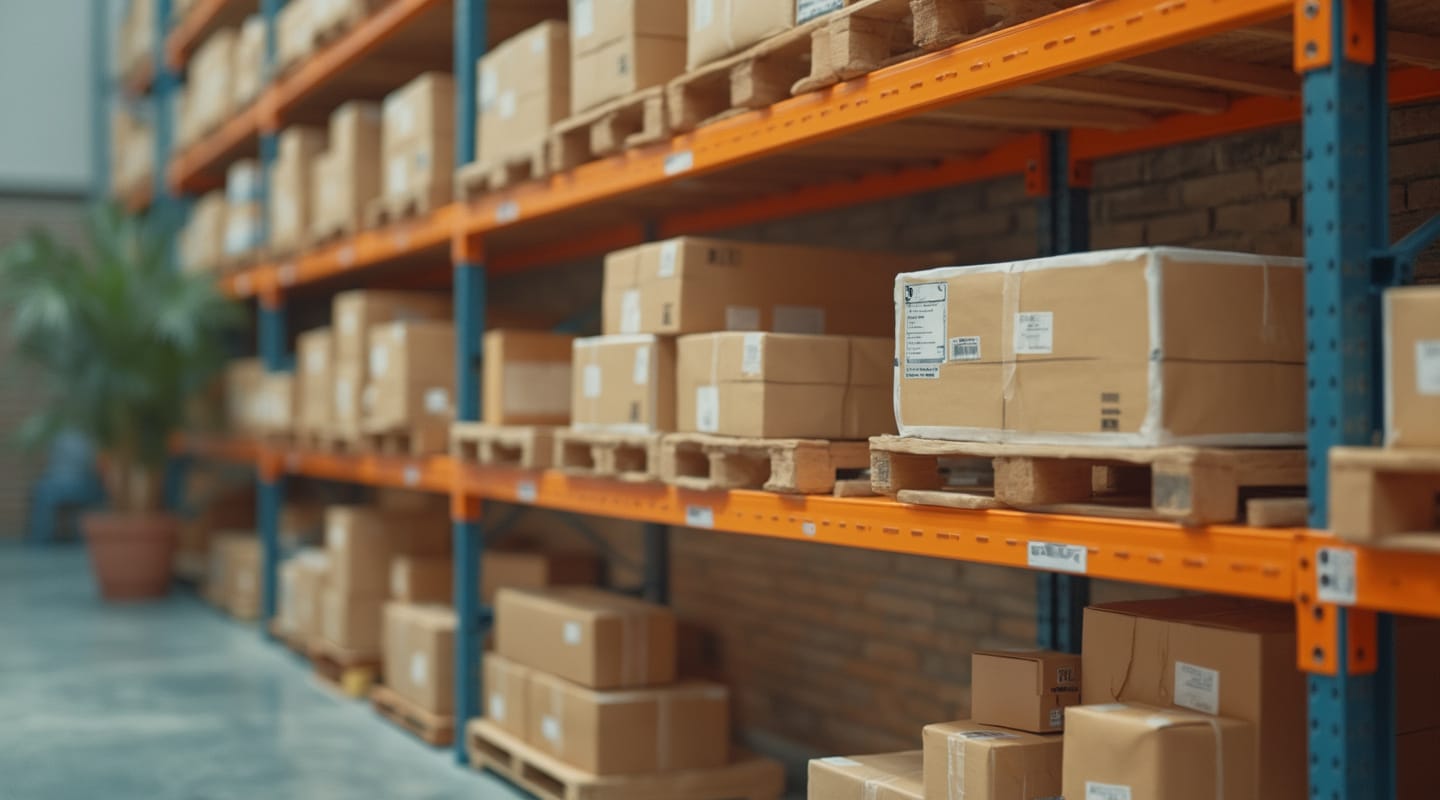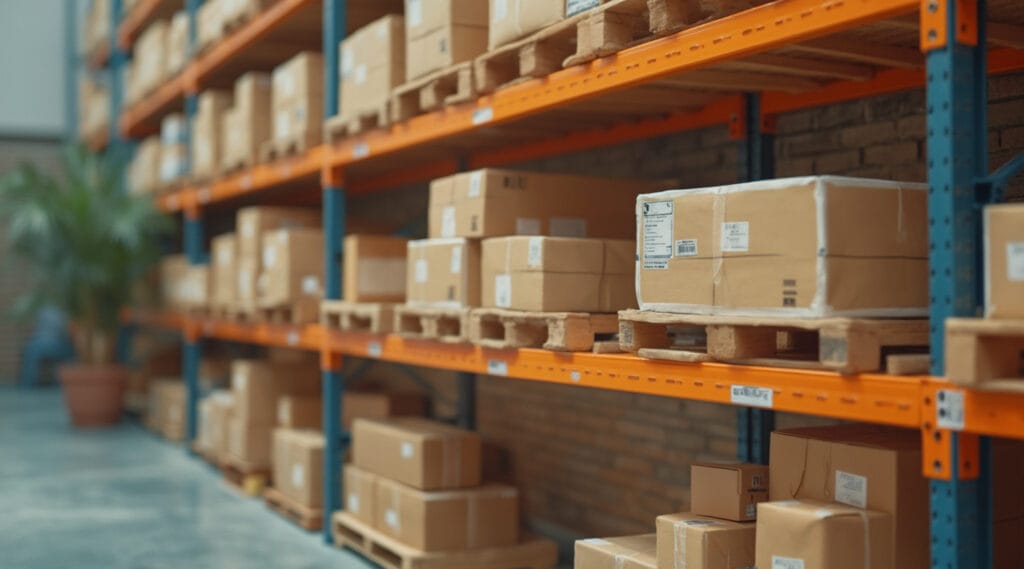In today’s rapidly evolving eCommerce landscape, choosing the right fulfillment model is one of the most critical decisions for your business. The model you select directly impacts your operational efficiency, customer satisfaction, and bottom line. With consumer expectations constantly rising and market competition intensifying, having the right fulfillment strategy can be the difference between thriving and merely surviving in the digital marketplace.
At the intersection of technology, logistics, and consumer behavior, fulfillment models have evolved significantly over the years. From traditional in-house operations to sophisticated third-party logistics partnerships, the options available to businesses today are more diverse than ever. Understanding these different models and knowing which one aligns best with your specific business needs is essential for sustainable growth and success.

Understanding Different Fulfillment Models
Before diving into the selection process, it’s important to have a clear understanding of the main fulfillment models available to eCommerce businesses today. Each model has its own unique characteristics, advantages, and limitations that make it suitable for different types of businesses and operational requirements.
In-House Fulfillment vs. Third-Party Logistics (3PL)
In-house fulfillment involves managing all aspects of order processing, packing, and shipping internally within your own facilities. This model gives you complete control over the entire fulfillment process, from inventory management to shipping methods. You oversee warehouse operations, staff training, technology implementation, and quality control directly.
In contrast, third-party logistics (3PL) involves outsourcing your fulfillment operations to a specialized provider. The 3PL partner handles warehousing, inventory management, picking, packing, and shipping on your behalf. This model allows you to leverage the expertise, infrastructure, and economies of scale that established 3PL providers offer without having to invest in building these capabilities yourself.
The key differences between these models include:
- Capital investment: In-house fulfillment requires significant upfront investment in warehouse space, equipment, software, and staff, while 3PL operates on a variable cost model based on your actual usage and needs.
- Scalability: 3PLs can more easily accommodate seasonal fluctuations and growth without requiring you to invest in additional space or staff.
- Control: In-house provides maximum control over processes and brand experience, while 3PL requires trusting a partner with your operations.
- Expertise: 3PLs bring specialized knowledge and best practices in logistics, while in-house requires developing this expertise internally.
Direct-to-Consumer (D2C) vs. Wholesale Distribution
Direct-to-consumer fulfillment focuses on shipping individual orders directly to end customers. This model has exploded in popularity with the growth of eCommerce, allowing brands to build direct relationships with their customers without intermediaries. D2C fulfillment typically involves smaller, more frequent shipments with custom packaging and personalized touches.
Wholesale distribution, on the other hand, involves shipping larger quantities of products to retailers or distributors who then sell to end consumers. This model deals with bulk shipments, palletized goods, and B2B logistics requirements that differ significantly from consumer-oriented fulfillment.
The operational contrasts between these models include:
- Order size and frequency: D2C involves many small orders versus fewer large wholesale orders.
- Packaging requirements: D2C often emphasizes branded, consumer-ready packaging while wholesale focuses on efficient, protective packaging for bulk items.
- Integration needs: D2C requires seamless integration with eCommerce platforms, while wholesale may need EDI connections with retail partners.
- Customer service considerations: D2C involves direct interaction with end consumers, creating different service expectations than B2B relationships.
Dropshipping and Other Alternative Models
Beyond the traditional models, several alternative fulfillment approaches have gained popularity in recent years. Dropshipping allows retailers to sell products without holding inventory—instead, orders are forwarded to suppliers who ship directly to customers. This model requires minimal upfront investment and eliminates inventory risk but offers lower margins and less control over the customer experience.
Other notable models include:
- Hybrid fulfillment: Combining multiple models (such as using in-house for fast-moving items and 3PL for everything else).
- On-demand fulfillment: Production occurs only after a customer places an order, eliminating inventory but extending fulfillment times.
- Marketplace fulfillment: Using services like Amazon FBA (Fulfillment by Amazon) to leverage established marketplace infrastructure.
- Section 321 fulfillment: Historically used as a specialized model for cross-border eCommerce that leveraged duty exemptions for low-value shipments entering the U.S. from countries like Canada. With the end of the Section 321 de minimis exemption on August 29, 2025, it is now primarily relevant as regulatory context rather than an active strategy.
Factors to Consider When Choosing a Fulfillment Model
Selecting the right fulfillment model requires a thoughtful analysis of multiple factors specific to your business situation. Let’s examine the key considerations that should guide your decision-making process.
Alignment with Business Goals
Your fulfillment strategy should support your broader business objectives. Different goals require different approaches:
- Rapid growth: If scaling quickly is your priority, a 3PL can offer the flexibility to expand without major capital investments.
- Brand differentiation: If creating a unique unboxing experience is central to your brand, in-house fulfillment might give you the control needed to perfect this aspect.
- Market expansion: Entering new geographic markets might require partnering with fulfillment providers who already have presence in those regions.
- Profit maximization: For businesses focused on optimizing margins, the cost efficiencies of certain models may take precedence over other considerations.
Always start by clarifying what success looks like for your business before evaluating fulfillment options. This alignment ensures that your operational decisions support your strategic direction.
Product Type and Characteristics
The nature of your products significantly impacts your fulfillment needs:
- Size and weight: Bulky or heavy items may require specialized handling equipment and storage solutions.
- Value: High-value items need enhanced security measures and potentially different insurance requirements.
- Perishability: Food, pharmaceuticals, or items with expiration dates require temperature-controlled environments and special inventory management practices like FIFO (first in, first out).
- Complexity: Products requiring kitting or assembly before shipping need fulfillment partners with these specific capabilities.
- Seasonality: Products with high seasonal demand fluctuations require flexible capacity and staffing.
Products with unique characteristics may narrow your options to specialized providers with the necessary expertise and facilities.

Target Market and Sales Channels
Where and how you sell your products should influence your fulfillment approach:
- Geographic distribution: If your customers are concentrated in specific regions, locating inventory closer to these areas can reduce shipping costs and delivery times.
- International presence: Cross-border sales introduce complexities around customs, duties, and international shipping that specialized fulfillment partners may be better equipped to handle.
- Channel mix: Selling through multiple channels (your own website, marketplaces, retail partners) may require different fulfillment approaches for each channel or a unified solution that can adapt to various requirements.
- Customer expectations: Different market segments have varying expectations regarding delivery speed, packaging quality, and overall experience.
Your fulfillment model should be able to serve all your sales channels effectively while meeting the specific expectations of your target customers.
Order Volume and Growth Projections
Current and anticipated order volumes play a crucial role in determining the most suitable fulfillment model:
- Low volume (under 100 orders/month): In-house fulfillment or dropshipping may be feasible and cost-effective.
- Medium volume (100-1,000 orders/month): This is often a transition point where businesses begin considering 3PL partnerships as in-house operations become more complex.
- High volume (1,000+ orders/month): At this scale, either sophisticated in-house operations or 3PL partnerships typically become necessary to maintain efficiency.
Growth trajectory is equally important. Rapid growth may favor models that can scale quickly without significant capital investment, while steady growth allows for more gradual capacity building. These volume ranges should be treated as starting points rather than rigid rules—many modern 3PLs now offer flexible or low minimums, especially for growing brands, so it’s worth exploring options even if you’re below traditional thresholds.
Budget Considerations
Financial factors play a critical role in your fulfillment model selection:
- Initial investment: In-house fulfillment requires upfront capital for warehouse space, equipment, technology, and training.
- Operational costs: Consider ongoing expenses like labor, utilities, maintenance, insurance, and software subscriptions.
- Variable vs. fixed costs: 3PL models typically offer variable costs based on usage, while in-house operations have higher fixed costs.
- Cost structure: Understanding how costs scale with volume is crucial—some models offer better economies of scale than others as you grow.
- Return on investment: Calculate how each model affects your margins and profitability over time.
When comparing costs between models, it’s important to perform a comprehensive analysis that includes all direct and indirect expenses. The lowest cost option may not always deliver the best value when factors like quality, speed, and customer experience are considered.
Customer Expectations
Today’s consumers have increasingly high expectations for their online shopping experiences:
- Delivery speed: Studies show that expectations for fast delivery continue to rise, with many customers looking for two-day options and some expecting same-day availability in certain markets—though most are still willing to wait 2–3 days when free shipping is offered.
- Shipping costs: Free or low-cost shipping remains a powerful conversion factor for online shoppers.
- Order accuracy: Errors in fulfillment can lead to costly returns and damage to your brand reputation.
- Tracking and visibility: Customers expect real-time updates on their order status from placement to delivery.
- Unboxing experience: For many brands, especially in premium categories, packaging presentation is a key part of the customer experience.
Your fulfillment model must be capable of meeting or exceeding these expectations consistently. Failing to do so can result in lost sales, negative reviews, and damaged customer relationships.
Steps to Evaluate and Select the Best Model
Once you understand the available models and have considered the key factors influencing your decision, follow these steps to systematically evaluate and select the optimal fulfillment approach for your business.
Assess Current and Future Business Needs
Start with a comprehensive assessment of where your business stands today and where you want it to go:
- Audit your current fulfillment process, identifying pain points, bottlenecks, and opportunities for improvement.
- Review your sales data to understand order patterns, average order value, geographic distribution, and seasonal variations.
- Document your specific requirements for inventory storage, special handling, order processing, and shipping.
- Forecast your growth for the next 1-3 years, considering potential new products, markets, and sales channels.
- Define your “must-have” capabilities versus “nice-to-have” features to prioritize your evaluation criteria.
This assessment provides the foundation for comparing different models against your specific needs rather than generic benchmarks.
Research and Compare Available Options
With a clear understanding of your requirements, thoroughly research the fulfillment options available to you:
- Investigate multiple providers within each model category (3PL, dropshipping platforms, marketplace fulfillment services).
- Evaluate their geographic coverage, technology capabilities, integration options, and service offerings.
- Read customer reviews and case studies to gauge reliability and performance.
- Request detailed information about pricing structures, minimum volume requirements, and contract terms.
- Check for industry specializations or certifications relevant to your product category (e.g., food safety, hazardous materials handling).
Create a shortlist of options that appear to match your requirements and deserve deeper investigation. For 3PL providers, consider requesting facility tours or virtual demonstrations of their systems.
Calculate Costs and Benefits
Perform a detailed financial analysis of each option on your shortlist:
- Create a comprehensive cost model that includes all expenses associated with each fulfillment option.
- For in-house, include capital investments, labor, space, utilities, technology, and maintenance.
- For 3PL, account for storage fees, pick and pack charges, shipping costs, integration fees, and minimum commitments.
- Calculate the total cost per order for different volume scenarios to understand how costs scale.
- Estimate the impact on cash flow, considering upfront investments versus ongoing operational expenses.
Beyond direct costs, quantify the potential benefits where possible:
- Reduced shipping rates through carrier volume discounts
- Lower cart abandonment from offering faster or cheaper delivery options
- Increased average order value from improved service levels
- Time savings for your team by outsourcing logistics management
- Reduced error rates and returns through improved accuracy
This analysis helps you understand the true cost-benefit relationship of each option rather than focusing solely on the most obvious expense categories.
Consider Scalability and Flexibility
Evaluate how well each option can adapt to your evolving business needs:
- Capacity scaling: How easily can the solution accommodate significant growth in order volume?
- Geographic expansion: Can the model support entry into new markets domestically and internationally?
- Seasonal flexibility: How well does it handle peak periods without compromising service quality?
- Product diversity: Can the solution adapt if you expand your product range to include items with different handling requirements?
- Technology evolution: How future-proof is the underlying technology, and how regularly is it updated?
The right fulfillment model should not only meet your current needs but also provide a foundation for growth without requiring a complete overhaul as your business evolves.
Evaluate Potential Partners
If you’re considering working with external providers, thorough due diligence is essential:
- Request detailed references from existing clients, preferably businesses similar to yours in size and industry.
- Assess financial stability through business credit reports or financial statements where available.
- Evaluate their technology systems, focusing on reliability, security, and integration capabilities with your sales platforms.
- Review their standard operating procedures for order processing, inventory management, quality control, and exception handling.
- Understand their approach to communication, problem resolution, and continuous improvement.
Cultural fit is also important—look for partners who share your values and commitment to customer experience. The relationship with your fulfillment provider will be strategic and long-term, so compatibility beyond just technical capabilities matters significantly.
Case Studies: Successful Fulfillment Model Selection
Examining real-world examples can provide valuable insights into how businesses have successfully matched their fulfillment models to their specific needs and goals.
Small Startup to Mid-Size Success Story
A direct-to-consumer accessories brand started with in-house fulfillment from the founder’s garage, processing 50-100 orders per month manually. As sales grew following successful marketing campaigns, they reached a critical decision point at around 500 monthly orders.
Their analysis revealed that continuing in-house fulfillment would require hiring additional staff, leasing warehouse space, and implementing new systems—a significant capital investment during a critical growth phase. After evaluating several 3PL providers, they selected a partner specializing in eCommerce fulfillment for fashion and accessories brands.
This decision allowed them to convert fixed costs to variable expenses, scale seamlessly through peak seasons, and expand their delivery options to include two-day shipping to most U.S. customers. The improved delivery speed and reliability contributed to a 15% increase in repeat purchases. Additionally, the founders reclaimed time previously spent on fulfillment operations to focus on product development and marketing.
Key lesson: For growing brands, the transition to a specialized 3PL at the right time can remove operational constraints to growth while improving customer experience.
Cross-Border Challenge Solved
A Canadian natural health products company wanted to expand sales to U.S. customers but faced challenges with cross-border shipping costs, customs delays, and high return rates due to delivery issues. Their existing fulfillment model—shipping all orders from their Canadian facility—was creating barriers to U.S. market penetration.
Before the end of the U.S. Section 321 de minimis exemption on August 29, 2025, they implemented a Section 321 fulfillment strategy with a partner offering warehousing just across the U.S. border. At that time, this approach allowed them to ship bulk inventory to the U.S. facility and then fulfill individual U.S. orders domestically, taking advantage of rules that exempted low-value shipments from certain duties and fees.
Following the regulatory change, they worked with a specialized cross-border fulfillment partner to redesign their approach—shifting to a Canadian-based model with optimized inventory placement and improved customs workflows. The updated strategy maintained faster delivery times for U.S. customers, preserved many of the earlier cost savings, and ensured ongoing compliance in the post–Section 321 environment.
Key lesson: Strategic cross-border fulfillment models can transform international expansion from a challenge into a competitive advantage—especially when they are regularly reviewed and adapted to changing regulations.
Scaling Through Hybrid Approach
A home goods manufacturer with both B2B and D2C sales channels struggled to efficiently manage the different requirements of these distinct business segments. Their wholesale orders to retail partners required palletized shipments, EDI integration, and strict compliance with vendor guidelines. Meanwhile, their growing D2C channel needed piece-picking, custom packaging, and rapid shipping to end consumers.
After evaluating their options, they implemented a hybrid fulfillment model: keeping wholesale fulfillment in-house at their existing warehouse while partnering with a 3PL for their D2C orders. This allowed them to leverage their existing expertise and infrastructure for B2B while gaining the specialized capabilities and scalability needed for eCommerce fulfillment.
The hybrid approach delivered several benefits: more efficient allocation of warehouse space, reduced labor costs during peak D2C seasons, improved delivery times to end customers, and the ability to offer expanded shipping options. Most importantly, it allowed each channel to operate with processes optimized for its specific requirements rather than compromising with a one-size-fits-all approach.
Key lesson: Different segments of your business may require different fulfillment models to achieve optimal results. Hybrid approaches can provide the flexibility to tailor solutions to each channel’s unique needs.

Making the Transition to a New Fulfillment Model
Once you’ve selected the right fulfillment model for your business, implementing the change requires careful planning and execution. The transition period can be challenging, but a methodical approach minimizes disruptions and sets you up for long-term success.
Planning Your Implementation
Develop a detailed transition plan that addresses:
- Timeline: Create a realistic schedule with specific milestones and contingencies for delays.
- Inventory management: Determine how existing inventory will be transferred or managed during the transition.
- System integration: Plan for the technical connections between your sales platforms and new fulfillment systems.
- Training needs: Identify who needs training on new processes and systems, internally and externally.
- Communication strategy: Decide how and when to inform customers, suppliers, and other stakeholders about changes.
Consider implementing in phases rather than an immediate complete cutover. For example, you might start with a specific product category or sales channel to test the new model before full implementation.
Managing the Transition Period
During implementation, focus on these critical success factors:
- Maintain backup capabilities until the new system is proven, either through temporary parallel operations or contingency arrangements with your previous solution.
- Establish clear metrics to monitor performance during the transition, with special attention to order accuracy, processing times, and customer feedback.
- Set up regular communication channels with key partners to quickly identify and address any issues that arise.
- Be prepared to adjust timelines if implementation challenges occur—rushing can lead to more significant problems.
Most importantly, remember that some disruption is normal during major operational changes. The goal is to manage this transition period effectively while keeping focused on the long-term benefits of your new fulfillment model.
Future-Proofing Your Fulfillment Strategy
The fulfillment landscape continues to evolve rapidly with new technologies, changing consumer expectations, and shifting regulatory environments. Building adaptability into your fulfillment strategy ensures you can respond effectively to these changes.
Emerging Trends and Technologies
Stay informed about developments that may impact your fulfillment operations:
- Automation and robotics are increasingly accessible for businesses of all sizes, transforming warehouse operations.
- Artificial intelligence and machine learning are enhancing demand forecasting, inventory optimization, and route planning.
- Sustainable packaging and carbon-neutral shipping options are becoming competitive differentiators as consumers grow more environmentally conscious.
- Micro-fulfillment centers in urban locations are enabling ultra-fast delivery options for time-sensitive products.
Regularly assess how these innovations might create opportunities to enhance your fulfillment capabilities or address emerging customer expectations.
Regular Review and Optimization
Treat your fulfillment strategy as a living system that requires ongoing attention:
- Schedule regular reviews of your fulfillment performance against key metrics and business objectives.
- Continuously gather and analyze customer feedback about delivery experiences.
- Stay updated on changes in shipping rates, carrier services, and international trade regulations.
- Benchmark your capabilities against competitors and industry leaders to identify improvement opportunities.
- Maintain open communication with your fulfillment partners about evolving needs and capabilities.
By approaching fulfillment as a strategic capability rather than just an operational function, you position your business to turn effective fulfillment into a sustainable competitive advantage.
Fulfillment Strategy: Frequently Asked Questions
What is a fulfillment strategy?
A fulfillment strategy is the approach a business takes to manage how customer orders are processed, packed, and shipped. It includes choosing between models like in-house fulfillment, third-party logistics (3PL), dropshipping, hybrid fulfillment, and marketplace fulfillment. The goal is to align operational capabilities with business goals, customer expectations, and cost efficiency.
What are the 7 steps of order fulfillment?
The typical seven steps of order fulfillment include: 1) Receiving inventory, 2) Storing products, 3) Managing inventory, 4) Receiving customer orders, 5) Picking items, 6) Packing and labeling, and 7) Shipping to the customer. Some models also include post-purchase support and returns handling.
What are the 5 processes of order fulfillment?
The five core processes of order fulfillment are: inventory management, order processing, picking and packing, shipping, and returns handling. Each step plays a critical role in ensuring accurate, timely, and cost-effective delivery to the customer.
What is fulfillment in a business plan?
In a business plan, fulfillment refers to the methods and resources a company uses to deliver its products to customers. It outlines whether the business will use in-house fulfillment, a third-party provider, dropshipping, or another model, and discusses how this choice supports scalability, cost control, and customer satisfaction.
What is B2B fulfillment?
B2B fulfillment involves shipping products in bulk to other businesses, such as retailers or distributors. It differs from D2C (direct-to-consumer) fulfillment in order volume, packaging requirements, and systems integration—often requiring EDI connections and palletized shipments.
What are the three types of fulfillment centers?
The three common types of fulfillment centers are: 1) Standard eCommerce fulfillment centers for D2C orders, 2) B2B fulfillment centers for wholesale or retail distribution, and 3) Specialized cross-border or compliance-focused centers that help manage international shipping, duties, and regulations. Each serves unique business needs and logistical goals.
Conclusion
Choosing the right fulfillment model is a complex decision with far-reaching implications for your business. By thoroughly understanding the available options, carefully assessing your specific needs, and methodically evaluating potential solutions, you can select a model that not only meets your current requirements but also supports your future growth and evolution.
Remember that there is no universal “best” fulfillment model—only the best match for your particular business situation. What works for a competitor or industry peer may not be optimal for your unique combination of products, customers, channels, and growth trajectory.
Whether you choose to build in-house capabilities, partner with a 3PL provider, or implement a hybrid approach, the goal remains the same: creating a fulfillment operation that delivers consistent, high-quality experiences to your customers while supporting your business objectives efficiently and cost-effectively. With the right model in place, fulfillment becomes not just a necessary function but a strategic asset that drives growth and customer loyalty.
Ultimately, the most successful fulfillment strategies are those that remain flexible and responsive to change. By establishing strong foundations now while building in the adaptability to evolve with your business, you create a fulfillment capability that will continue to serve you well through every stage of your growth journey.
For businesses looking to decide between in-house warehousing and outsourced fulfillment, remember that this decision isn’t permanent. Many successful companies begin with one model and transition to another as their needs evolve. The key is making an informed choice based on thorough analysis rather than assumptions or industry trends alone.


